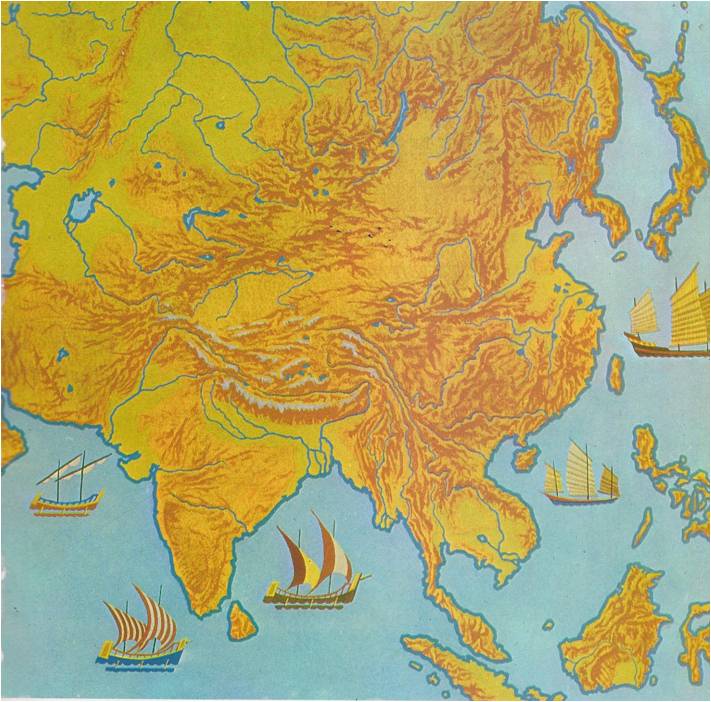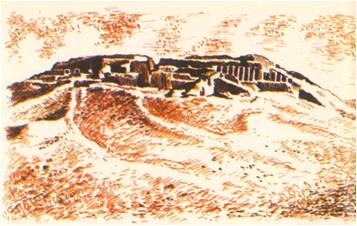UNTIL 1947, when the Moslem state of Pakistan was carved out of its western and eastern corners, the entire triangle of land that points south from the Himalaya Mountains into the Indian Ocean was known as India. Geographers call this huge land mass a subcontinent, because it is almost completely cut off from the rest of the continent of Asia. The Himalayas on its northern frontier form a continuous barrier of rock, the highest in the world. “MOTHER GANGES” From the southern slopes of the Himalayas, two great rivers run down to the ocean. The valley of the Indus River, on the west, is mainly desert; overlooking it are the only breaks in the Himalayan wall, the Khyber Pass and the Bolan Pass. The valley of the Ganges River, on the east, is a broad, fertile plain. Indians consider this river holy and call it “Mother Ganges.” Together, the Indus and Ganges Valleys make up North India. South of the Ganges Plain rise the Vindhya Mountains. To the south stretches a very large region of hilly uplands, called the Deccan. At its western and eastern edges the Deccan drops suddenly to coastal plains, forming long mountain walls called Ghats. The Vindhyas, the Deccan, the Ghats and the strips of lowland along the coasts make up South India. INVADERS FROM THE NORTH Geography influences history. This is particularly true of India — so much so, in fact, that North and South India have really had two separate histories. From earliest times, the people in both parts of the country were mostly poor farmers, living in villages. They shared the beliefs of the Hindu religion. Hinduism taught them that life was only a dream, they paid little attention, north or south, to the events that took place in their lifetimes. Otherwise, however, …
Read More »Civilization comes to India 3500 B.C to 200 B.C.
For thousands of years during the Stone Age, only scattered groups of people had lived in India. With only the simplest tools of bone, wood and stone, they hunted and gathered food. Cut off from other peoples by the mountain and the sea, the first Indians made few advances in their primitive way of life. Then, sometime between 3500 B. C., new settlers began to appear along the Indus River Valley in northwestern India, a region that would be called West Pakistan thousands of years later. It seems almost certain that these newcomers were from the mountains and plateaus to the northwest, the modern lands of Iran and Afghanistan. When they arrived, the new commers were already able to make pottery, to farm and to raise animals. Most likely too, some of them knew of the cities far to the west, on the plains of Mesopotamia. From those more advanced cities, the Indus valley people learned about new objects, such as copper and bronze tools. They also heard tales about how those distant peoples controlled the river’s water, or how they scratched signs in clay tablets to record words. However much they may have borrowed, the Indus Valley people worked out their own ways. By 2500 B. C., a distinctive civilization had begun to develop along the Indus River. The river itself played an important part in this civilization. Sometimes it flooded so badly that it wiped out villages and fieldworks, or even changed its course entirely. Usually however, it overflowed just enough to leave a rich soil for each season’s crops and the people worked together to take advantage of it. The river also made it easy for the various settlements to exchange goods and ideas. The People of the Indus Of the dozens of villages, two soon grew …
Read More »

